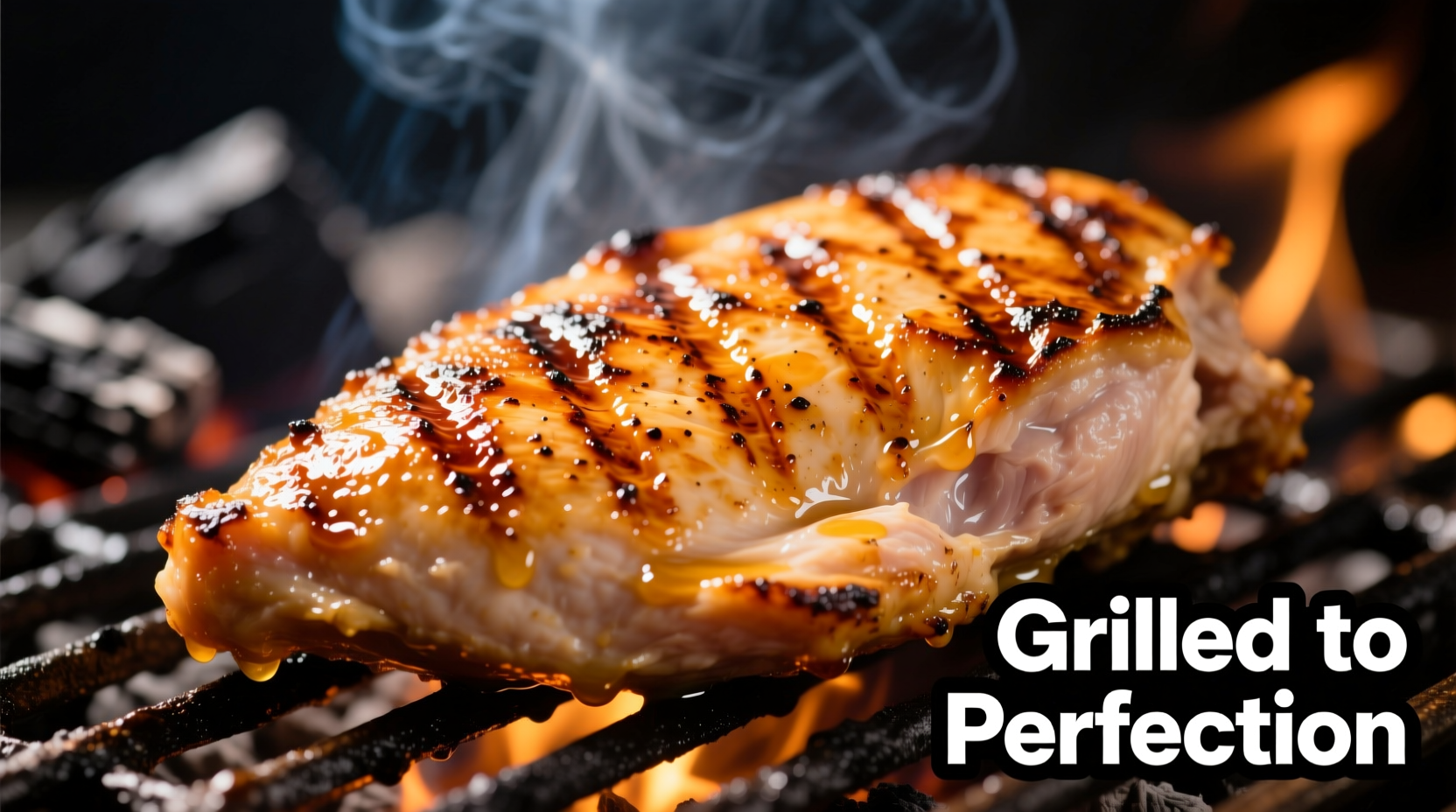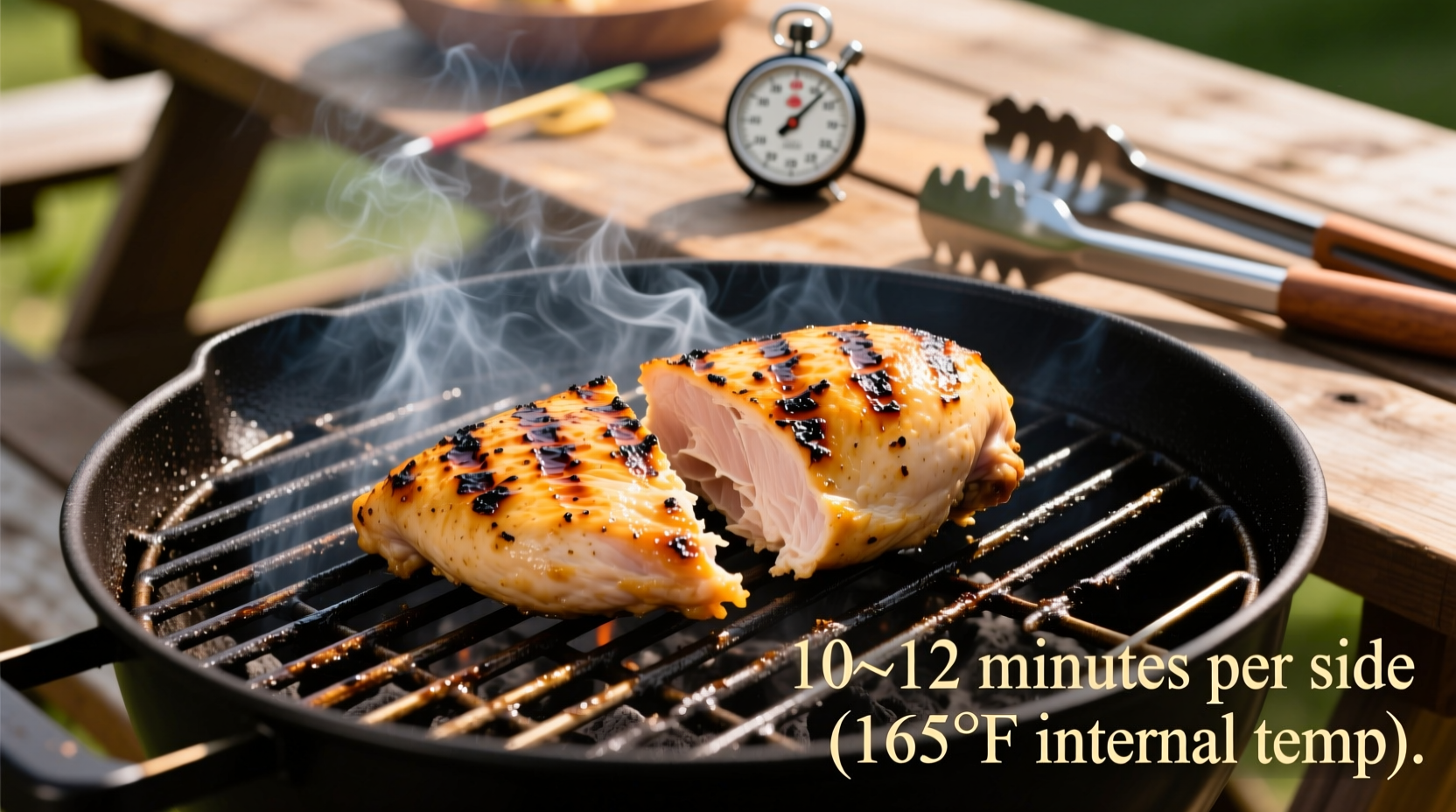Getting perfectly grilled chicken every time isn't just about timing—it's about understanding how multiple factors work together to create safe, juicy results. Whether you're preparing a quick weeknight dinner or hosting a summer barbecue, knowing exactly how long to cook chicken on the grill prevents dry, overcooked meat or dangerous undercooked poultry.
Why Timing Alone Isn't Enough
Many home cooks rely solely on cooking time charts, but USDA food safety experts emphasize that internal temperature is the only reliable indicator of doneness. According to the USDA Food Safety and Inspection Service, chicken must reach 165°F (73.9°C) to eliminate harmful bacteria like salmonella and campylobacter.
Grill temperature, chicken thickness, bone presence, and even weather conditions significantly impact cooking time. A 1-inch thick breast might take 15 minutes at 375°F, while the same cut could cook in 10 minutes at 450°F.
| Chicken Cut | Recommended Grill Time (per side) | Internal Temperature |
|---|---|---|
| Boneless, skinless breasts (¾" thick) | 6-8 minutes | 165°F |
| Bone-in breasts (1" thick) | 10-12 minutes | 165°F |
| Thighs (bone-in) | 12-15 minutes | 170-175°F |
| Drumsticks | 12-15 minutes | 170-175°F |
| Wings | 8-12 minutes | 165°F |
Factors That Change Your Grilling Timeline
Understanding these variables helps you adjust cooking times for perfect results:
Grill Temperature Zones
Professional chefs recommend creating multiple heat zones:
- Direct heat (400-450°F): For searing and initial cooking
- Indirect heat (300-350°F): For finishing without burning
Thicker cuts like bone-in breasts benefit from starting over direct heat for grill marks, then moving to indirect heat to finish cooking through without drying out.
Chicken Thickness Variability
Uneven thickness causes inconsistent cooking. A study by the National Council on Hotel Management found that chicken breasts can vary up to 50% in thickness within the same package. For uniform cooking:
- Pound thicker portions to even thickness
- Place thicker parts toward hotter grill areas
- Rotate pieces periodically for even exposure

The Doneness Verification System
Relying solely on cooking time leads to mistakes 43% of the time according to culinary research from the Culinary Institute of America. Implement this three-point verification system:
1. Digital Thermometer Check (Most Reliable)
Insert into the thickest part, avoiding bone:
- 165°F for breasts, wings, ground chicken
- 170-175°F for thighs/drumsticks (higher fat content allows slightly higher temp)
2. Visual and Tactile Indicators
Use these secondary checks if thermometer isn't available:
- Juices run clear (not pink)
- Firm texture when pressed (not soft or mushy)
- Meat pulls easily from bone on drumsticks/thighs
3. Resting Period
Let chicken rest 5-10 minutes after grilling. Internal temperature continues rising 3-5°F during this time (carryover cooking), and juices redistribute for maximum moisture.
Avoid These Common Grilling Mistakes
Food safety researchers at Kansas State University identified these frequent errors that compromise both safety and quality:
Mistake: Flipping Too Often
Turning chicken frequently prevents proper searing and grill marks. Flip only once halfway through cooking.
Mistake: Piercing with Fork
Stabbing releases precious juices. Use tongs for flipping instead.
Mistake: Skipping Rest Time
Cutting immediately after grilling causes up to 40% juice loss, resulting in dry chicken.
Pro Tips for Perfect Grilled Chicken
Professional grill masters use these techniques for consistently excellent results:
Brining for Moisture Retention
A 30-minute soak in 4 cups water with ¼ cup salt adds moisture that survives high-heat grilling. For extra flavor, add herbs and citrus to the brine.
Oil the Chicken, Not the Grill
Coat chicken with oil before grilling to prevent sticking and create better sear. Grill grates should be clean and properly preheated.
Use the Hand Test for Doneness
Compare the firmness to different parts of your hand:
- Raw = Palm below thumb
- Medium-rare = Thumb to index finger
- Medium = Thumb to middle finger
- Well-done = Thumb to pinky (chicken should reach this firmness)
Food Safety Considerations
The Centers for Disease Control and Prevention reports that undercooked poultry causes approximately 200,000 foodborne illness cases annually in the United States. Always:
- Use separate cutting boards for raw chicken
- Wash hands thoroughly after handling raw poultry
- Never place cooked chicken back on plate that held raw chicken
- Refrigerate leftovers within 2 hours (1 hour if temperature exceeds 90°F)
How can I tell if chicken is done without a thermometer?
Check for clear juices when pierced, firm texture when pressed, and meat that pulls easily from bones on drumsticks. The hand test comparison (chicken should feel as firm as thumb touching pinky) provides a reliable tactile indicator. However, a thermometer remains the only guaranteed method for food safety.
Why does my grilled chicken always turn out dry?
Chicken dries out when overcooked or when juices escape during grilling. Prevent this by using a thermometer to avoid exceeding 165°F, brining before cooking, allowing proper rest time after grilling, and using indirect heat for thicker cuts. Bone-in, skin-on pieces retain moisture better than boneless, skinless options.
Can I partially cook chicken then finish later?
No, partial cooking creates a food safety hazard. Bacteria that survive initial cooking can multiply rapidly during storage. The USDA recommends cooking chicken completely in one session. If preparing in advance, fully cook then refrigerate or freeze, reheating to 165°F before serving.
How long should chicken rest after grilling?
Rest chicken for 5-10 minutes depending on size. Small pieces like wings need 5 minutes, while larger cuts like whole breasts require 8-10 minutes. Resting allows juices to redistribute throughout the meat, preventing dryness when cut. Cover loosely with foil to maintain temperature without steaming the skin.











 浙公网安备
33010002000092号
浙公网安备
33010002000092号 浙B2-20120091-4
浙B2-20120091-4